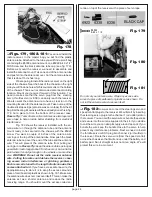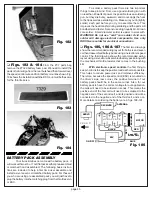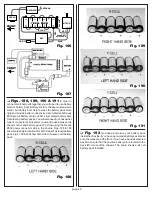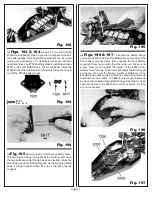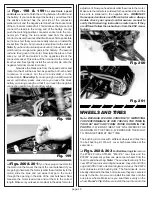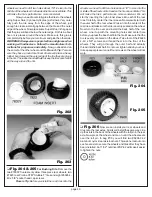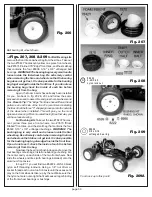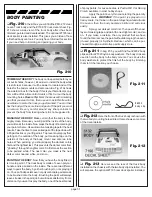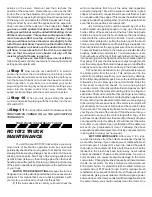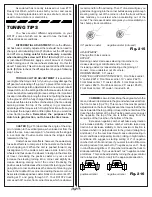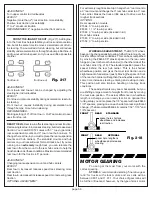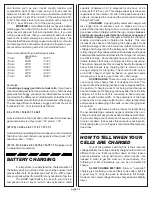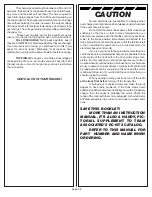
page 58
The charging current must be between 0.05 and 0.12
amperes. If less current, the pack will never reach full charge;
any more and the pack will overheat. The time required to
reach full charge ranges from 15 to 40 hours, depending on
the current used. The charger can be left on for a much longer
time without harming the cells; however, the output voltage
of the pack will be temporarily lowered by an extremely long
overcharge. The voltage returns to normal after a discharge-
charge cycle.
These next two tips are for the benefit of serious
racers. If you’re just out having fun, don’t worry about them.
FULL DISCHARGE. Ni-Cd packs perform best if
they are COMPLETELY discharged before they are charged.
If you are involved in racing, you will have to do this if you
expect to win any races! Discharge for at least an hour
(preferably overnight with a clip-on resistor) before charging.
TOPPING-UP can give you a little extra voltage at
the beginning of a race, as long as you don’t overdo it. Put
the last minute or two of charge into your pack just before
the race starts.
GOOD LUCK IN YOUR RACING!
CAUTION
Ni-cad batteries are susceptible to damage when
overcharged at a high rate, and can release caustic chemicals
if the overcharge is severe.
Do not stall the motor under power. If the truck stops
suddenly on the track, or fails to move forward when you
attempt to accelerate, push the throttle control on your trans-
mitter to the brake position immediately and attend to the
truck. A small rock can stall the gears, and if the throttle is left
in the on position the result can be a burned out motor (or
electronic speed control unit).
If you run your truck to the point where more than one
cell in the pack is completely discharged, it is possible to lose
radio control of the truck before the drive motor stops com-
pletely. For this reason you should not operate your truck in
an area where it could be harmed or cause harm, such as near
a busy roadway or a pool of water. Usually radio control will
be regained as soon as you pick up the truck and the motor
is allowed to free-run. If you still don't have control, then you
should unplug the motor.
When you stop running your truck, turn off the radio
at the truck first before turning off the transmitter.
A burned-out or shorted motor can make the truck
appear to have radio problems. If the truck slows down
suddenly and the radio acts erratically even with a full battery
charge, then the cause is probably the motor. Check the
range of the radio with the motor unplugged. A shorted motor
will draw extremely high current even under no-load condi-
tions.
SAVE THIS BOOKLET!
MORE THAN AN INSTRUCTION
MANUAL, IT'S ALSO A HANDY, PIC-
TORIAL SUPPLEMENT TO TEAM
ASSOCIATED'S RC10T2 CATALOG.
REFER TO THIS MANUAL FOR
PART NUMBER AND NAME WHEN
ORDERING.

